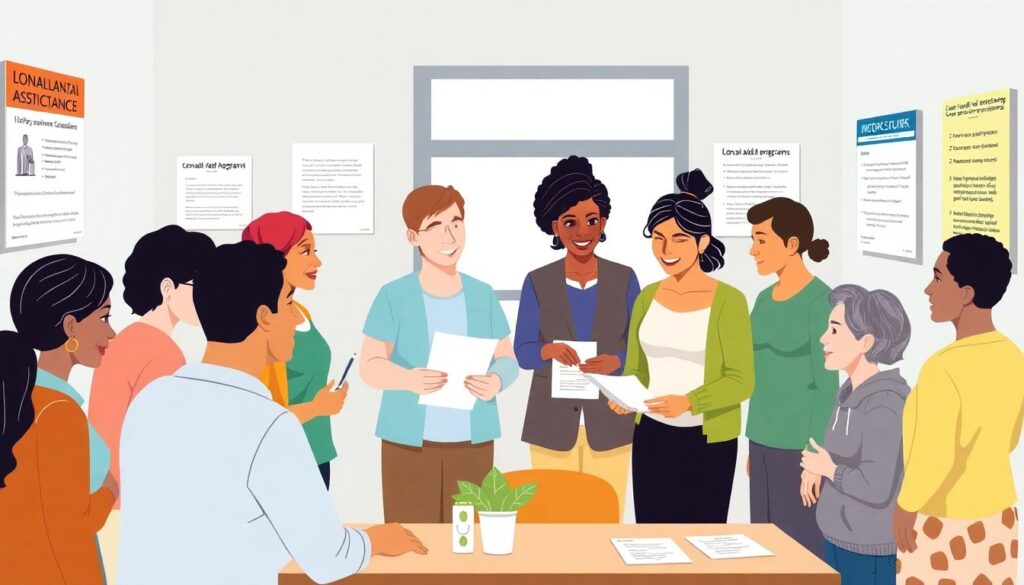Understanding Community Resources for Financial Help

Navigating financial hardship can be overwhelming, especially for individuals unfamiliar with local assistance programs. Community resources for financial help are designed to provide temporary relief and long-term support to residents during times of need. These resources vary by region but generally include government-funded programs, nonprofit organizations, faith-based initiatives, and local outreach services.
Defining Key Terms
Before exploring the types of support available, it’s important to clarify foundational terminology:
– Community Resource: A service or organization within a local area that offers support to residents, often related to health, housing, employment, or finances.
– Financial Assistance Programs: Systems established to offer monetary support to individuals or families in financial crisis. These can be public (e.g., government subsidies) or private (e.g., charity grants).
– Eligibility Criteria: The specific requirements that applicants must meet to qualify for aid, often based on income, residency, or family size.
Types of Financial Help Available Locally
1. Emergency Rent and Utility Assistance: Many cities provide short-term help through municipal funds or local nonprofits for tenants facing eviction or disconnection of utilities.
2. Food Support Services: Community food banks and pantries offer groceries or meal vouchers. Some programs also include nutritional education.
3. Medical Bill Assistance: Local clinics and charity hospitals may provide sliding scale fees or financial aid for uninsured patients.
4. Employment and Training Programs: Workforce development centers often provide job placement support, resume workshops, and vocational training with stipends.
5. Childcare Subsidies: State programs or local coalitions may help low-income families afford daycare services while parents work or study.
Illustrating Resource Access Through a Diagram
Imagine the process of accessing financial help as a funnel:
– Top layer: Broad awareness of available programs (information dissemination)
– Middle layer: Determining eligibility and collecting documentation
– Bottom layer: Application submission and follow-up
This funnel highlights the narrowing path from awareness to successful assistance. Each step acts as a potential bottleneck if misunderstood or improperly executed.
Common Mistakes First-Time Applicants Make

Many newcomers to financial assistance make costly errors due to misinterpretation or lack of preparation. The most frequent include:
1. Ignoring Local Eligibility Guidelines
Not all programs apply universally. Some are city-specific or tailored to certain demographics. Applying without checking eligibility wastes time and resources.
2. Missing Deadlines
Application windows for rent relief or seasonal aid (e.g., heating subsidies) may be short. Late submissions are often rejected without exception.
3. Incomplete Documentation
Failing to submit required papers — such as proof of income, identification, or lease agreements — is a leading cause of application denial.
4. Overlooking Nonprofit Solutions
People often focus on government programs and overlook faith-based or community-run options that may have faster processing times or more flexible criteria.
5. Not Following Up
After submission, many applicants assume their job is done. In reality, follow-up calls or emails may be necessary to confirm receipt or clarify missing information.
Comparing Community Resources vs. National Aid Programs
While both aim to assist individuals in financial distress, there are critical differences:
– Speed of Assistance: Local resources often respond faster due to fewer bureaucratic layers.
– Scope of Coverage: National programs may offer larger grants but are more selective and standardized.
– Personalization: Community programs can tailor aid packages based on the applicant’s story, while federal assistance follows rigid guidelines.
For instance, a local housing nonprofit might offer a one-time rent grant after a job loss, while a federal housing voucher program requires a long waiting list and standardized income verification.
Real-World Scenario

Consider Maria, a single mother who recently lost her job. She applies only to federal unemployment insurance but waits several weeks without a response. A social worker later introduces her to a local community fund, which approves emergency grocery and utility assistance within days. This example underscores the importance of diversifying application sources.
How to Strategically Access Community Financial Help
To maximize the effectiveness of your financial assistance search, follow these steps:
1. Research Your Local Organizations
Use city websites, local libraries, or 211 helplines to identify programs near you.
2. Read the Fine Print
Understand the eligibility requirements and documentation list before applying.
3. Prepare a Financial Snapshot
Create a file with income statements, expense breakdowns, and identification to streamline the application process.
4. Apply to Multiple Sources
Don’t rely on a single program. Community, state, and federal programs can sometimes be combined.
5. Maintain Communication
Stay in touch with case workers or agency representatives. Prompt replies can speed decisions.
Final Thoughts
Knowing your community resources for financial help requires proactive effort, attention to detail, and a willingness to explore multiple avenues. While national programs offer broad coverage, local options often provide faster, more personalized assistance. Avoid beginner errors by preparing thoroughly, staying organized, and reaching out for guidance when needed. With the right strategy, community financial resources can serve as a vital safety net during challenging times.

